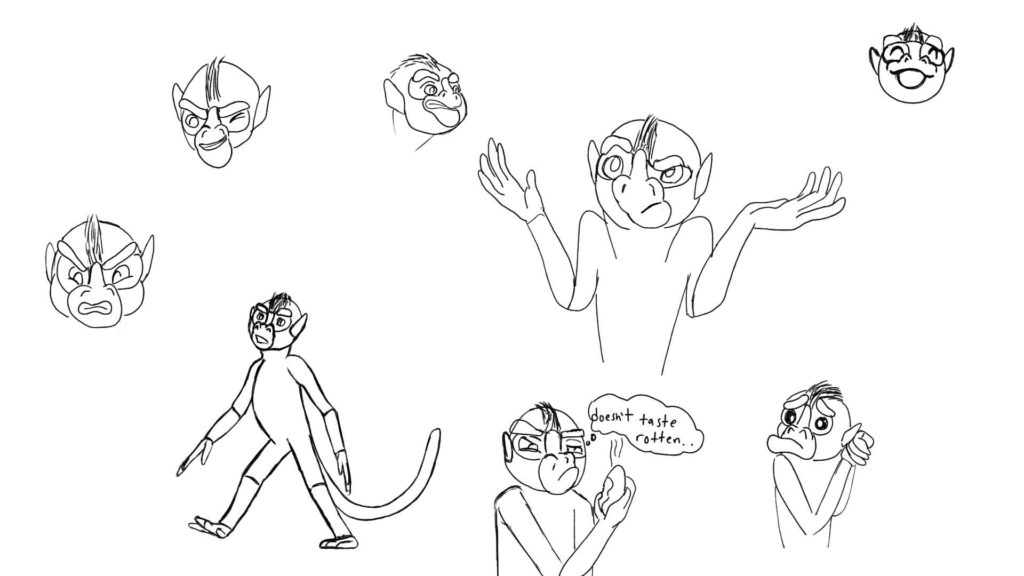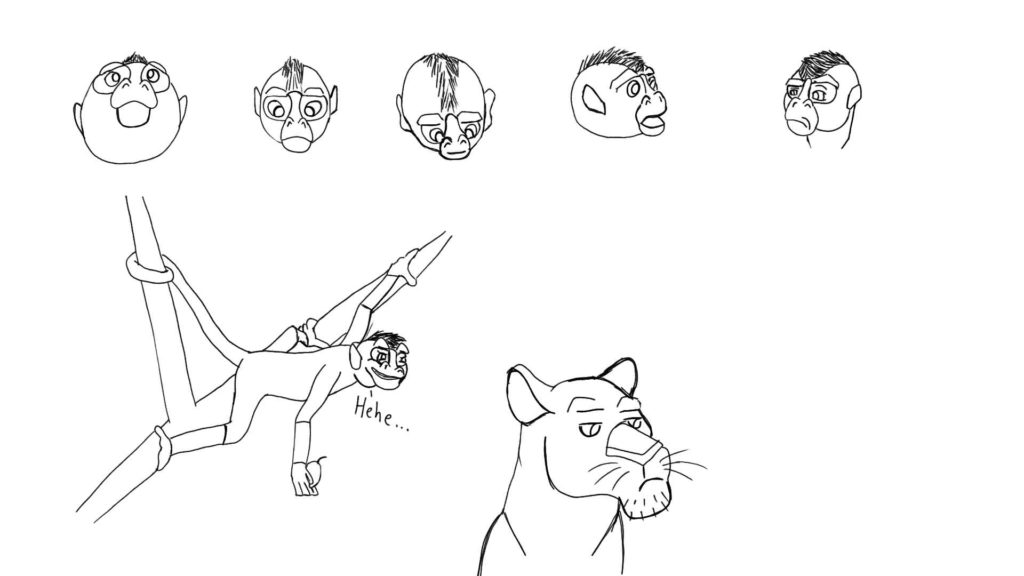Prototype Showcase!
Last week (Monday, Nov. 16) I came up with some more prototypes, this time focusing on the animation of some of the characters:
Colleague Feedback:
So, Krita’s cool and all, but it’s pretty bare bones with Audio…
Now, don’t get me wrong, Krita is still super cool and I still plan on using it for my thesis project, but the app was programmed through open source and volunteer work, so some features may still be lacking or not as strong in comparison to other software. The only qualm I really have with Krita is it’s audio import capabilities. Yes, it can import audio, but I found out that it can import only one audio file per animation document, and there’s not really an intuitive way to stream, scrub, or edit said audio within the app itself (As is currently, anyways. This could very well be patched in the future to incorporate more audio-based features!). This isn’t too much of a big deal as I have access to other apps to bypass this issue, but this does mean I have to setup my audio in a particular manner when importing into Krita. The way I’ll be planning going forward when syncing audio to my animations is to work with dialogue as the base audio when making the animation itself, then afterwards I can add extra audio (i.e. music, ambience, etc.) by importing them into apps like After Effects after finishing the initial animation. So it will require some work arounds bring the audio all together, but this shouldn’t be too big of a problem, at least not big enough for me to abandon Krita just yet!
Class Critique on the Prototypes
For the most part sharing these, my classmates thought my prototypes were successful in how the characters behaved and moved. I was advised to keep the animation render at 24 frames per second (fps) instead of the 12fps that I animated at. While animating at 12fps helped see the movement better and gave the illusion of slowed pace, it actually tampers a bit with audio if the audio source itself plays at a rate faster than the animated fps (rendering an animation at 12 fps over a 24fps audio clipped desyncs the whole animation, which is a no go.) I only animated at 12 fps because when It looked at a similar speed to how I animated in Adobe Animate, which for some reason registering its animation at 24fps worked at the same speed as 12fps in Krita (or maybe my eyes are just broken because that honestly shouldn’t be the case when jumping between software like that).
Anyhow, I realized I could animated more fluidly by 1s, 2s, and 3s, on Krita than I could in Animate (since for some reason Krita’s fps rendering feels so much faster than Animate’s. I’m honestly not sure how to explain that, maybe I’m just experiencing the render differently? Strange….?). This is basically drawing out frames’ “screentime”, and how long they’ll remain on the canvas before switching to the next frame. This affects the fluidity on the animation (From what I understand, animating on 1s is like Disney level animation: real smooth and crisp, or is typically for fast paced/action packed sequences or scenes that are really significant to the plot/story. 2s is like tv animation such as Looney Toons: with sparser frames but still recognizably clean movement. 3s is the slowest and most spaced out between frames, like Dragon Ball Z or older anime with various still shots or camera panning before the next frame and/or scene.), and this can also save time depending on which/what kind of scenes I’m animating, so I may take this into account when animating certain scenes whether to do them by 1s, 2s, or 3s.
The Case of Character Development
One crucial question I had was how I should try to build my characters, especially the human one since she’d be the one most identified with and our only human perspective into this world. I really need to flesh her out and make sure she’s relatable enough with the audience, since I have to write her in a way that makes it feel like we’re walking in her shoes. Since traversing through this world is a big deal for the story, I asked my classmates what they’d like to see our human character do in this world. I got responses along the lines of just showing how she’s adapting to these different environments, to make the viewer learn as she’s learning how to navigate the jungle and these other wild lands. This could be helpful in expanding on the lore and how the world function, and I could explore this in character interactions and how our human character just behaves in this world, which will be a good base of focus for my next set of prototypes.
What’s next?
For my next batch of prototypes, I’ll be focusing on the writing. This is a big story, as I’ve stated many times and in many posts, I’ll need to condense down to something that can be explained in a short window of time that won’t overwhelm the audience, and myself for that matter. when you’re stuck with so many ideas, they tend to go to war with one another and make a mess in your head. Talk about a “Brainstorm”! haha…ha…yikes.
Anyways, for this upcoming week, I’ll be trying to work out a condensed base storyline for this pilot. Last week at Tea, I got the idea to think of this story as a pitch for a children’s book, and I think this will be a great way to try and compact the story in a digestible manner without going overboard with exposition. Because if you can’t reliably explain it to children, then how are you going to explain it to adults? (A big thank you and shoutout to Professor Buckleitner for lending me this neat trick!). This will be a bit of a revised breakaway from the storyboarding I’ve initially wanted to do for this prototype, but into order to have cohesive storyboards, it’d probably be best to have a cohesive storyline in minds first (otherwise they’re just glorified beat boards, I guess.)! If I can manage it with the time I have, I’ll try to accompany this with at least script and character bios, and possibly some actual storyboarding. Nevertheless, this should be a fun experience to go through! I haven’t written much regarding these characters since sophomore year, and it’ll be quite nostalgic finally getting the chance to really work with them again.
*Storyboards, Lore/Worldbuilding Documents, and other forms of Concepts are all still a crucial part of this process and fleshing out this story of mine. These will all still come to fruition, but I may have been a bit ambitious to try to complete all of these before Nov. 30th in the time that I have. I’ll most certainly be posting more prototypes afterwards with this cool story I want to tell and share.*

